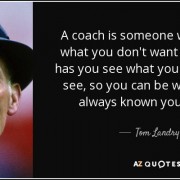Prerequisites for Growth
Last week we began a discussion on Avenues to Growth, and in introducing the concept we described how employing tactics to achieve that growth is meaningless without first defining your business goals, “your WHY”. The reason: how do you quantify actions without a desired outcome with which to measure those actions against?
Just get in your truck and drive. Go. Which way do you turn out of your driveway, or at the corner? Where are you going? After driving for an hour, aimlessly, where will you be?
It may be anecdotal, but there is truth in saying “If you don’t know where you’re going, how will you know when you get there?” Every time you get into your vehicle to drive, you have a goal of getting somewhere. It may be to the rink, the bank, or the store, but the point is you have a goal of where you want to go. And somehow, quite amazingly sometimes, you reach your declared destination.
Your business is no different.
Pursuing growth in business without defining what it is you’re trying to achieve is as fruitful as getting into your truck and driving aimlessly for an hour. You will have used up valuable resources (time, capital, fuel/energy, etc.) and found yourself somewhere you didn’t expect to be. Then you have the challenge of figuring out what to do when you’re there. Turning the truck around and heading home is much easier than doing the same in business. Metaphor ended.
Step 1. Define your business goals for growth.
To achieve your growth goals, you will need sufficient resources. This opens up a plethora of subtopics that is suited to a separate discussion. For today, we will look at only one: financial.
Part of the activity in defining growth goals is to include discussion on the business’ financial resources. Does your business have, or can it acquire, the resources required to successfully implement the tactics that will achieve your goals?
Ask any banker, any financial analyst, and you’ll probably get a response akin to the importance of cash to your business. Cash is critical, often suggested that “cash is king.”
“Cash is not King…it’s the Ace!”
-Phil Symchych
To suggest cash is king would indicate that something else is the ace, meaning something else is more important than cash, and I’m here to tell you that cash is the lifeblood of your business and draining the cash from your business is similar to draining the blood for your body.
It’s true, cash is not king…it’s the ace.
“Growth, however, is king!”
-Kim Gerencser
By letting growth be the ace and cash be king, you’re placing growth ahead of cash; this is incredibly dangerous. Many aggressive businesses have grown themselves to the brink of bankruptcy by making this mistake. I recall dealing with some young farmers who pursued growth so rapidly that their working capital couldn’t keep up. They began borrowing more and more operating credit to keep the business afloat and found themselves using their operating line of credit to make their term loan payments (HINT: bankers get real squirrelly real fast when this happens.) This business didn’t have sufficient cash when pursuing their growth actions. They had no defined goals, only (what now appears to be) reckless abandon. They might have one year left, and if that year isn’t stellar they could be forced into liquidation.
Step 2. Compile (or acquire) sufficient resources for growth.
Because of my work in agriculture, I often get asked by non-farming people “How big is too big” when it comes to the size and scale of modern farm operations. My reply: I can tell you exactly when a farm is too big (as the audience waits with baited breath)…it’s the moment that the farm has outgrown the management ability of the manager! For some it’s 40,000 acres, for others it’s 400 acres. It all comes down to management capacity and ability.
Too often, businesses feel they must expand to remain relevant. As such, they pursue growth before they are ready. This can lead to management burnout, employee dissatisfaction, and lost customers. Consider a elementary school aged child; if that child has not successfully exhibited sufficient competence in math, reading, and writing, the child should not (by rights) be advanced to the next grade. Doing so will cause the child to be unnecessarily stressed in the next grade from having to learn new concepts before the base knowledge has been established. Such a situation can lead to all kinds of issues better left to the educational professionals. There is great similarity in the abilities of the manager in your business to the example of the school age child. Asking management to manage a business that has grown beyond their ability is a recipe for failure.
Step 3. Perform an audit of management’s ability & capacity for growth.
Plan for Prosperity
Aspirations for growth are born out of the desire for prosperity. Both must be planned. Accidental prosperity from fortuitous growth is not sustainable.
Growth is exciting, invigorating, maybe even intoxicating…especially when growth happens systemically, systematically, and successfully.
Conduct the 3 Step Growth Audit laid out above to evaluate your likelihood of successful growth. If you need some guidance, give me a call or email.










